Old St Paul’s Cathedral in London was an iconic medieval structure in the heart of England.
Construction of the cathedral began in 1087 and was completed in 1314, spanning over two centuries.
It was a significant religious and architectural landmark until its destruction during the Great Fire of London in 1666.
Construction
The cathedral was commissioned by William the Conqueror after the Norman Conquest of England.
The site chosen for its construction was atop Ludgate Hill, the highest point in the city.
Old St. Paul’s architectural style was predominantly Romanesque, characterized by rounded arches, thick walls, and small windows.
It was designed to showcase the grandeur of the Norman dynasty and symbolize the religious power and authority of the Catholic Church.
The cathedral was primarily built with Kentish ragstone quarried from Maidstone, while other materials such as limestone and marble were also used.
Wooden scaffolding and cranes were employed to aid in the construction of the towering structure.
The cathedral had a cruciform layout, with a nave, transepts, choir, and chapels.
It boasted a magnificent central spire, which reached a height of around 150 meters, making it one of the tallest structures in London at the time.
The interior featured ornate decorations, stained glass windows, and intricate stone carvings, showcasing the architectural mastery of the medieval craftsmen.
Old St. Paul’s underwent several renovations and expansions throughout its existence, adding to its splendor and size.
It was a hub for religious ceremonies, royal events, and the burial place of numerous prominent figures, including bishops, knights, and even monarchs.
Sadly, the cathedral met its tragic fate in 1666 when a devastating fire engulfed much of London.
Christopher Wren, a renowned architect, was later entrusted with designing and constructing the new St. Paul’s Cathedral.
Interior
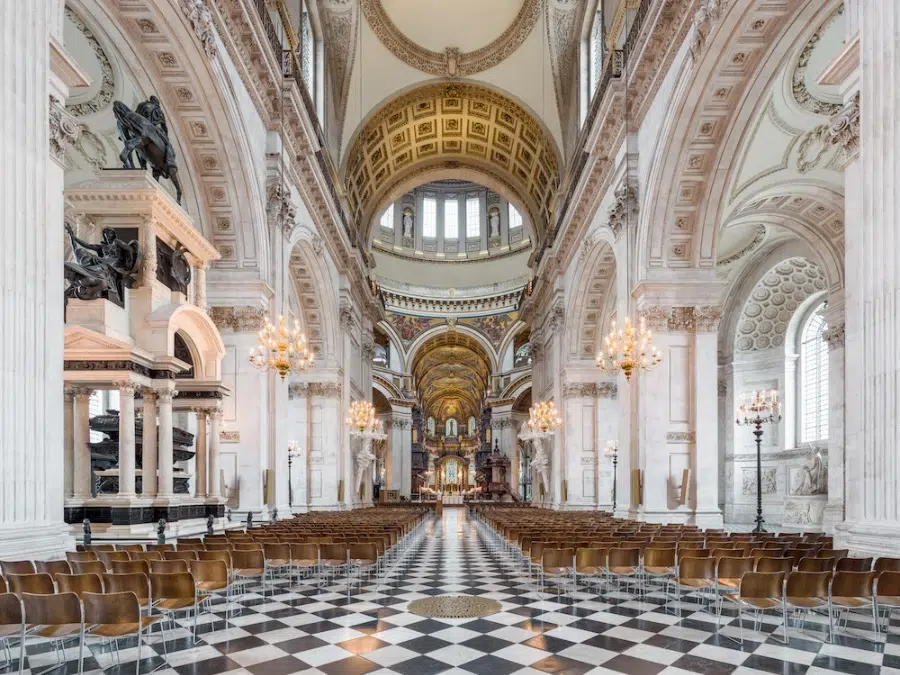
Old St. Paul’s Cathedral was a medieval cathedral located in the City of London, England.
It was the principal church in London from its completion in the 14th century until it was destroyed in the Great Fire of London in 1666.
The interior of Old St. Paul’s Cathedral was a magnificent example of Gothic architecture and contained several notable features.
Nave
The central space of the cathedral, the nave, was a long and wide area that extended from the entrance to the transepts.
It was flanked by columns and arches, creating a sense of grandeur and height.
Transepts
Old St. Paul’s had a cruciform plan, meaning a transept intersecting the nave, forming a cross shape.
The transepts housed chapels and altars dedicated to various saints, often adorned with intricate stone carvings.
Choir
Located at the eastern end of the cathedral, the choir was where the clergy and choir members performed the liturgical services.
It was separated from the nave by a screen or rood screen, often elaborately decorated with statues and carvings.
High Altar
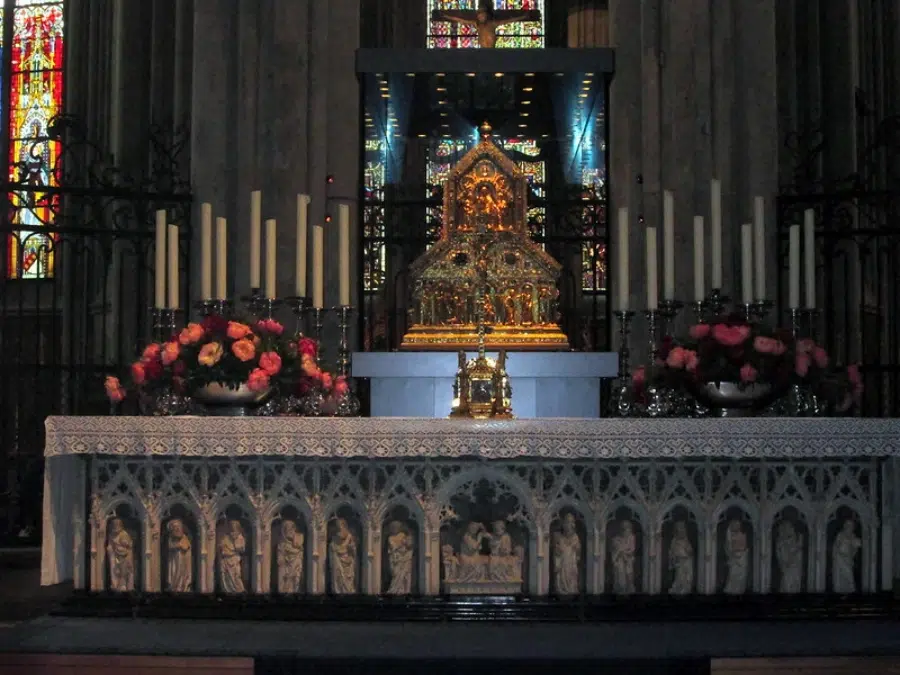
The high altar was the choir’s focal point and the cathedral’s most sacred area.
It was typically raised on a platform and adorned with elaborate decorations and religious symbols.
Side Chapels
Old St. Paul’s Cathedral featured numerous side chapels along the nave and transepts.
These chapels were dedicated to specific saints, guilds, or wealthy individuals who funded their construction.
Each chapel had its own altar and often contained ornate decorations and tombs.
Stained Glass Windows
The cathedral’s windows were an integral part of its interior.
They featured vibrant stained glass depicting biblical scenes, saints, and other religious imagery.
The windows let colorful light filter into the interior, creating a serene and awe-inspiring atmosphere.
Tombs and Monuments
Old St. Paul’s housed numerous tombs and monuments dedicated to prominent individuals, including bishops, royalty, and military figures.
These memorials were often adorned with intricate sculptures and epitaphs.
These are just a few of the interior features that the Old St Pauls Cathedral exhibited; one can only imagine how serene it must have felt!
Paul’s Walk
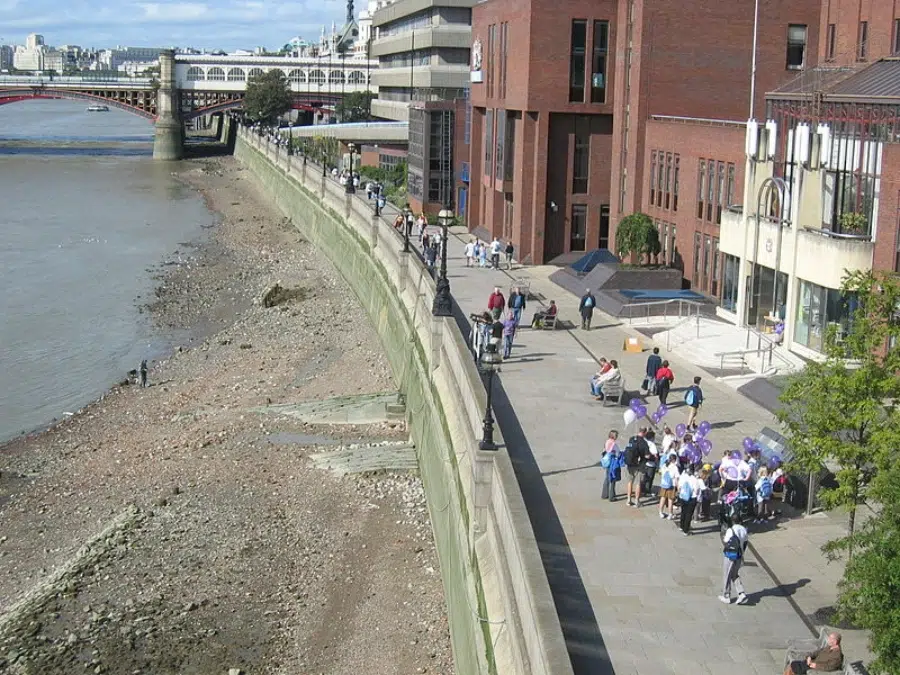
The central nave of the Old St. Paul’s Cathedral, also known as the main body of the church, was a prominent architectural feature of the cathedral.
In the Old St. Paul’s Cathedral, the central nave extended for approximately 586 feet (179 meters), making it one of the longest naves in Europe at the time.
This long central name hence earned the name Paul’s Walk.
The central nave was a long and spacious area extending from the cathedral’s entrance towards the altar.
It was characterized by a high and vaulted ceiling supported by columns and arches.
The nave was typically wider and taller than the side aisles, creating a sense of grandeur and emphasizing its importance within the cathedral’s overall design.
The columns and arches were often adorned with carvings, sculptures, and ornamental motifs, showcasing the craftsmanship of the period.
Stained glass windows let light filter into the nave, creating a colorful and awe-inspiring atmosphere.
The central nave was the main gathering space for religious ceremonies, worship, and other important events.
It accommodated large congregations, and its grandeur and architectural beauty were intended to inspire a sense of awe and reverence among visitors.
The central nave of the Old St. Paul’s Cathedral played a significant role in medieval London’s religious and cultural life.
Its impressive architectural features and grand scale symbolized the city’s spiritual and civic identity.
Old St Paul’s Cathedral destruction – what led to this
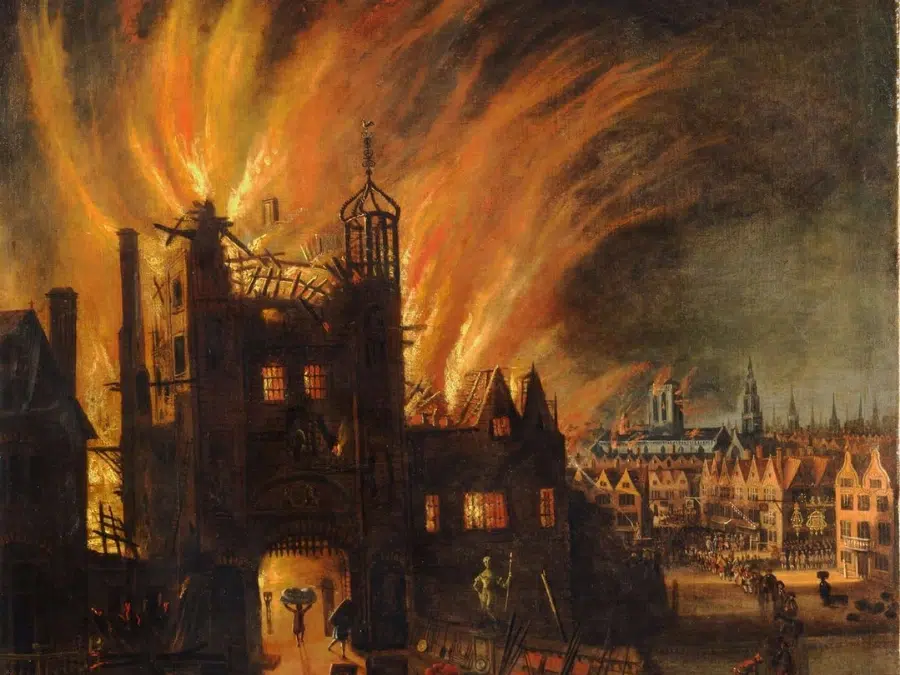
The decline of the Old St. Paul’s Cathedral can be traced back to several factors over its long history.
Built-in the 11th century, it stood as one of England’s most significant medieval cathedrals until its destruction in the Great Fire of London in 1666.
The construction of the Old St. Paul’s Cathedral began in 1087 and took several decades to complete.
As the medieval period progressed, the cathedral faced numerous challenges, including financial constraints, maintenance issues, and periodic damage due to fires.
In the 16th century, King Henry VIII’s dissolution of the monasteries affected religious institutions, including St. Paul’s Cathedral.
In 1538, the cathedral was stripped of its treasures, including precious metals and relics, as part of the dissolution process.
Removing these valuable assets weakened the cathedral’s financial stability and diminished its cultural significance.
The English Civil War (1642-1651) had a detrimental impact on St. Paul’s Cathedral.
The cathedral suffered damage and neglect during the conflict between the Parliamentarians (Roundheads) and the Royalists (Cavaliers).
It was used as a horse stable, ammunition store, and a target for artillery fire.
The war inflicted severe structural damage on the cathedral, leading to a decline in its overall condition.
The Great Fire of London (1666), which started in a nearby bakery and ravaged the city for three days- was the final straw in the decline of the cathedral.
The fire spread rapidly and consumed many old wooden structures, including St. Paul’s Cathedral.
The fire destroyed most of the building, leaving only its stone shell and iconic spire intact.
After the Great Fire, plans were made to rebuild St. Paul’s Cathedral, and the task fell to Sir Christopher Wren.
Great Fire of London (1666)
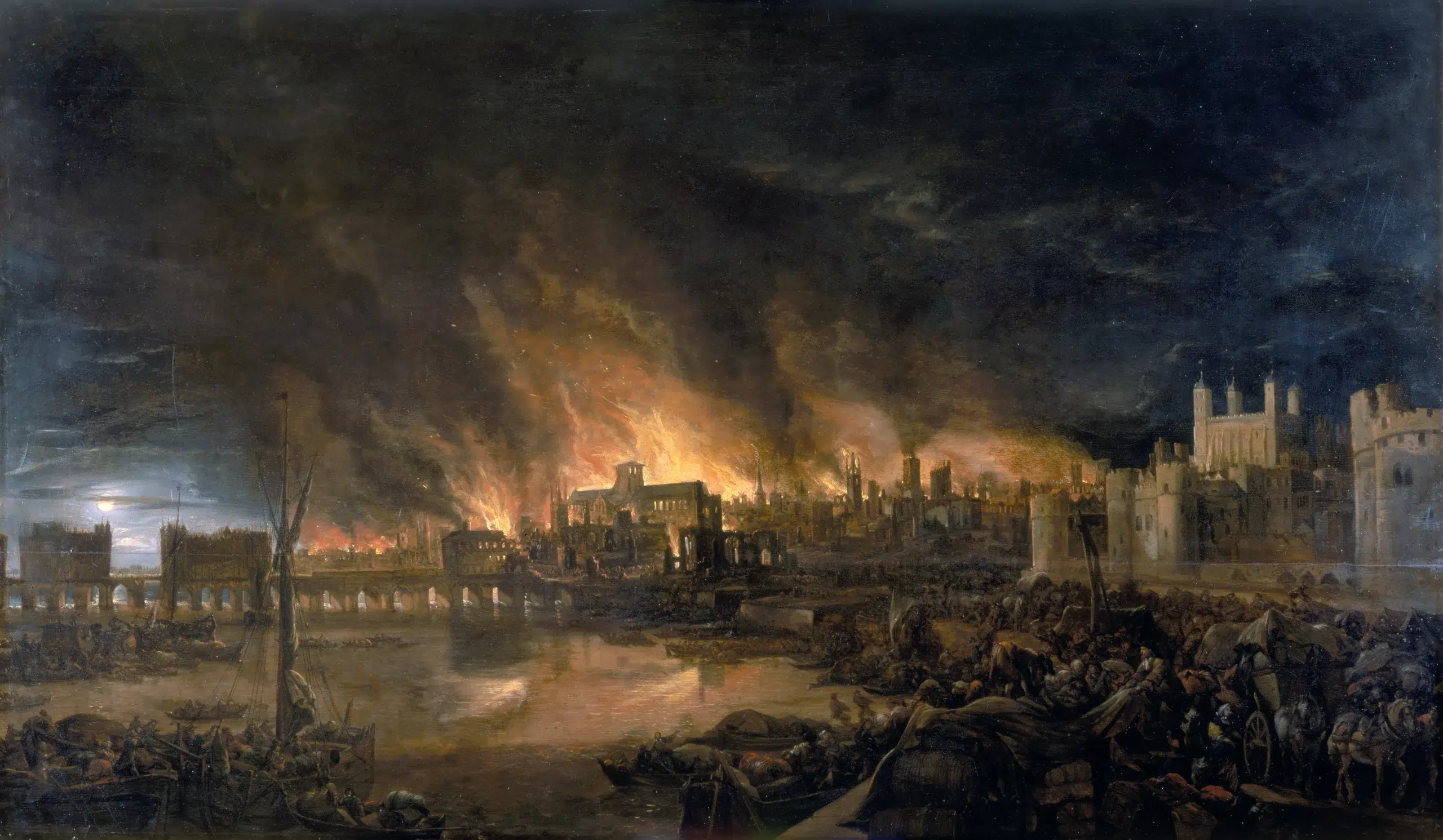
The Great Fire of London was the last Old St Paul’s Cathedral fire that caused the most destruction.
The Great Fire of London was a catastrophic event that occurred in 1666 and profoundly impacted the city of London.
The fire started on September 2, 1666, in a bakery on Pudding Lane owned by Thomas Farriner.
The exact cause of the fire remains uncertain, but it is believed that a spark or ember from the bakery’s oven ignited some nearby combustible materials.
The fire spread rapidly due to several factors, including strong winds, narrow streets, and the predominantly wooden structures in the city.
The Great Fire of London raged for three days, engulfing a significant portion of the city.
The fire consumed approximately 87 churches, including the medieval St. Paul’s Cathedral, 13,200 houses, and numerous other buildings.
It devastated the commercial district and left an estimated 70,000 out of the city’s 80,000 inhabitants homeless.
Despite the widespread destruction, the Great Fire allowed London to rebuild.
Architect Sir Christopher Wren played a crucial role in designing a new city plan and overseeing the reconstruction of buildings, including the iconic St. Paul’s Cathedral.
Aftermath
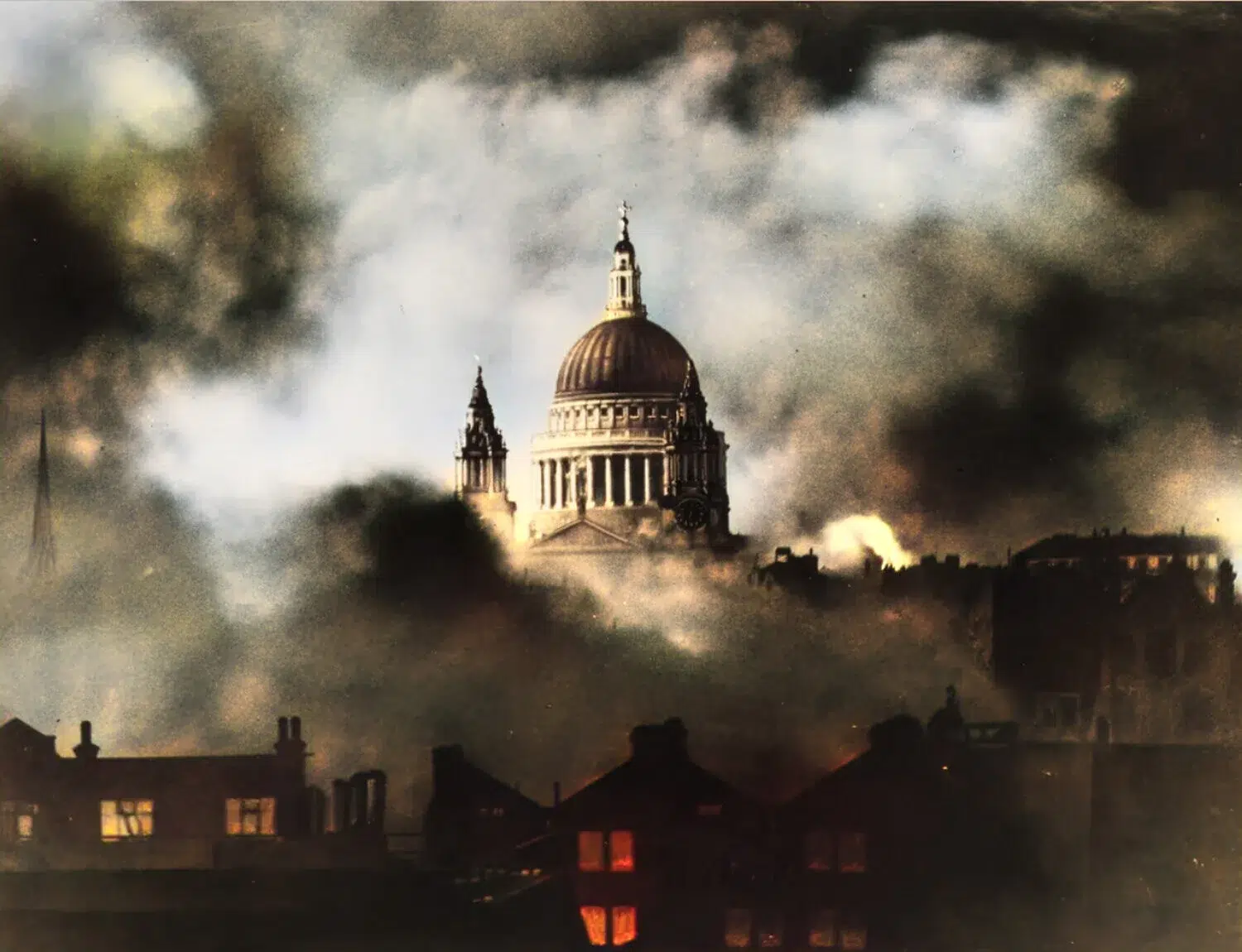
The fire quickly spread throughout the city due to strong winds and the predominantly wooden structures of the time.
St. Paul’s Cathedral was engulfed in flames and suffered extensive damage.
The wooden scaffolding erected for ongoing restoration contributed to the rapid spread of the fire within the cathedral.
Despite the destruction, the stone shell of the cathedral survived the fire.
The iconic spire, designed by Sir Christopher Wren, also remained intact.
However, the roof, wooden interior fittings, and most decorative elements were destroyed or severely damaged.
The cathedral housed numerous valuable artifacts, including paintings, sculptures, stained glass, and the library.
After the fire, Sir Christopher Wren, a prominent architect, was tasked with rebuilding St. Paul’s Cathedral.
Wren’s design for the new St. Paul’s Cathedral aimed to incorporate Gothic and classical architectural elements.
The rebuilding process took several decades, spanning from 1675 to 1710.
It involved constructing a new dome, rebuilding the interior, and adding intricate decorative features.
The result was a magnificent masterpiece that became one of London’s most iconic landmarks, known as the St. Paul’s Cathedral we see today.
While the fire caused extensive damage to the cathedral, it also allowed Wren to create an architectural masterpiece symbolizing London’s resilience and renewal.
Notable burials in Old St Paul’s
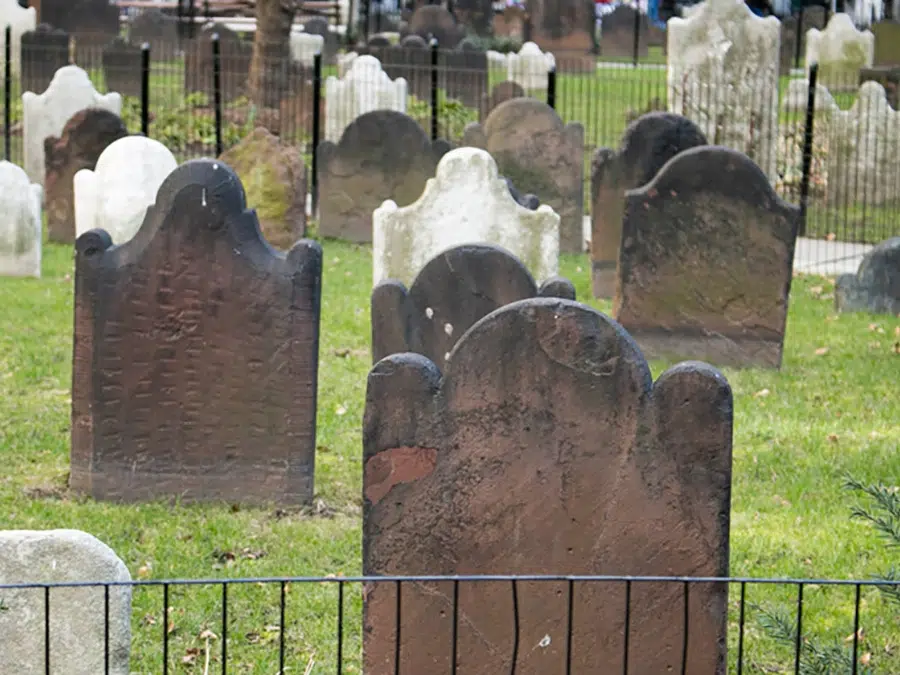
Old St. Paul’s Cathedral was the final resting place for numerous notable individuals throughout its history.
Here are some of the notable burials that took place in the cathedral:
- John of Gaunt (1340-1399)
- William de Montagu (1328-1397
- John Beauchamp, 1st Baron Beauchamp (1274-1336)
- Sir Philip Sidney (1554-1586)
- Sir Christopher Wren (1632-1723)
- John Donne (1572-1631)
Additionally, some areas of the city offer free parking on bank holidays.
Plan your visit to St Paul’s Cathedral in a better way, also read about
- St Paul’s Cathedral’s opening hours
- How to reach St Paul’s Cathedral
- Service at St Paul’s Cathedral
- St Paul Cathedral dress code
- Things to remember while visiting St Paul
- Restaurants near St Paul Cathedral
- History of the Cathedral
- St Paul’s Cathedral vs Westminster Abbey
- FAQs
FAQs
1. What happened to old St Paul’s Cathedral?
The original St. Paul’s Cathedral, built in the 11th century, was destroyed by a massive fire in 1136. It was rebuilt in a Romanesque style, only to be struck by another devastating fire in 1666 during the Great Fire of London. The flames consumed most of the cathedral, leaving only its stone shell and the iconic spire standing.
2. Who was buried in old St Paul’s Cathedral?
Here are a few infamous people who have been put to rest at the Old St. Pauls:- Sir Christopher Wren (1632-1723)- John of Gaunt (1340-1399)- John Beauchamp, 1st Baron Beauchamp (1274-1336)
3.How old is St Paul’s Cathedral in London?
The current St. Paul’s Cathedral in London, also known as the New St. Paul’s Cathedral,u0022 is approximately 348 years old. And, if the Old St Pauls Cathedral were to exist today, it would be more than 10 centuries old!
Featured Image: STpauls.co.uk



